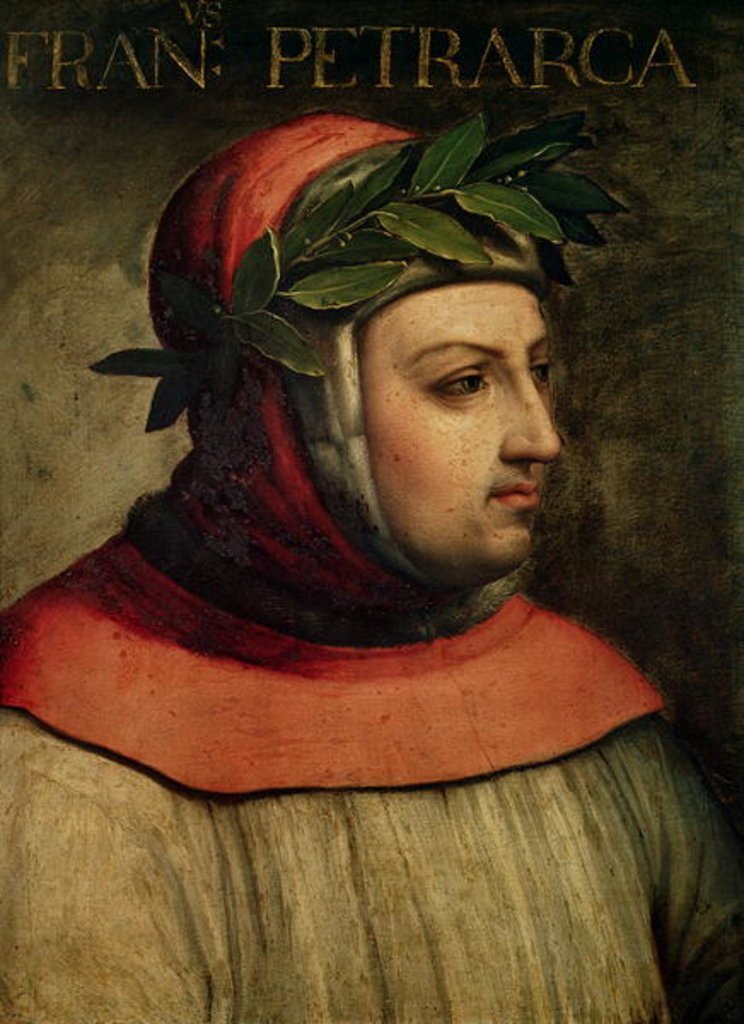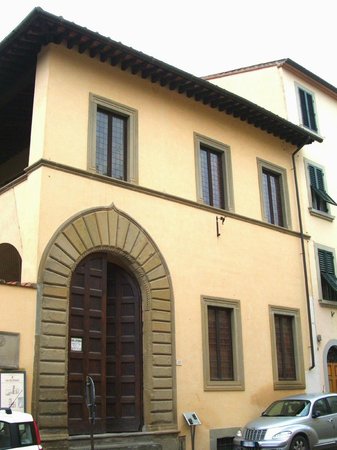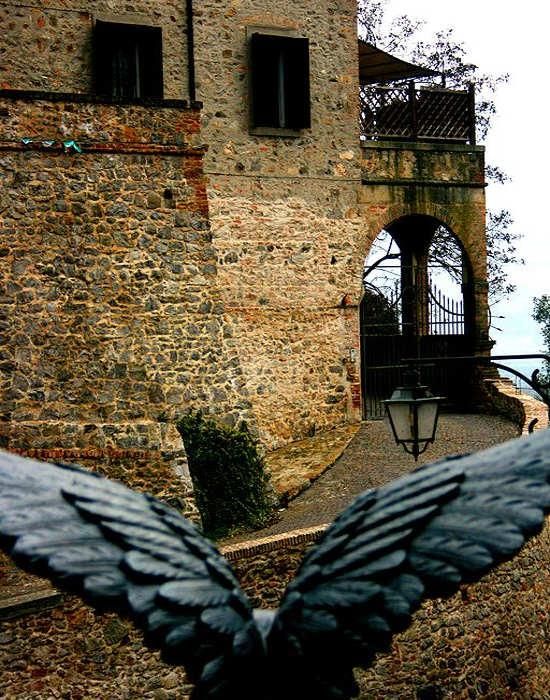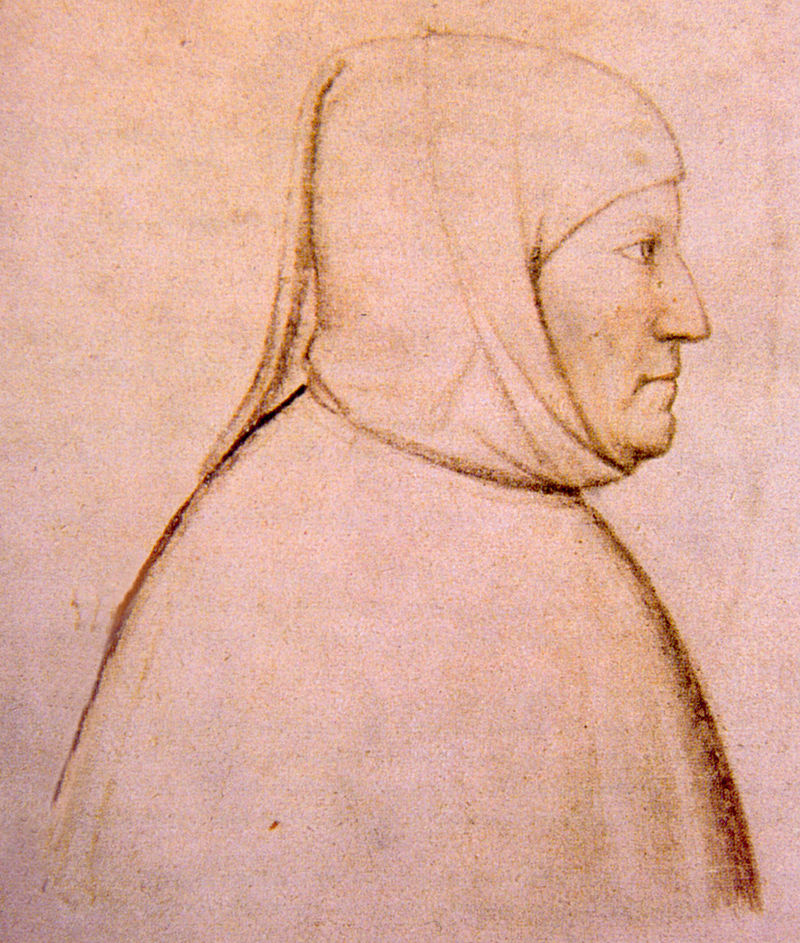Francesco Petrarca, commonly known anglicized as Petrarch, died on the 18 or 19th of 1374. He was a great and celebrated Italian scholar and poet during the early Italian Renaissance and one of the earliest humanists. Petrarch’s great legacy includes his philosophy of humanism that profoundly influenced intellectual accomplishments of the Renaissance that later spread through Europe. Because of the rediscovery of Cicero’s letters by Petrarch, he is credited with initiating the 14th-century Italian Renaissance and the Father of Renaissance humanism.


Born in 1304 in Arezzo, Tuscany, Petrarch was the son of Ser Petracco and his wife, Eletta Canigiani. The name he was given Francesco Petracco was latinized to Petrarca. Remarkably, the famous Dante Alighieri was his father’s friend. After his early childhood in the village of Incisa, near Florence, Petrarch then spent most of his early youth living around Florence, Tuscany, and even Avignon, where his family moved after Pope Clement V had relocated there in 1309 to start the Avignon Papacy. At first, Petrarch studied law at the University of Montpellier between 1316 and 1320, and then he returned to Italy, where he also studied in Bologna between 1320 and 1323. Petrarch didn’t like the field and dedicated himself to a religious life, serving under Cardinal Colonna and taking minor ecclesiastical orders in 1326 against his family’s wishes. This allowed him to travel and study the classics and write freely.
His interest in Latin literature and poetry grew significantly as he matured. While traveling, Petrarch was interested in ancient architecture and assiduously searched for forgotten classical texts. Throughout his lifetime, he collected a great deal of such texts, which he later promised to Venice in exchange for a house to obtain refuge from the plague. The more he learned about the classical period, the more Petrarch venerated it and lamented about the darkness of the Middle Ages and the lack of culture he had to contemplate every day. He staunchly believed that humanism must resurrect in Italy and lead people to a new enlightenment.
Thanks to his interest in the classics and his indomitable energy, Petrarch was able to contribute a great deal to the recovery of knowledge from famous writers of ancient Rome and Greece. For example, he advised Leontius Pilatus’s translation of Homer from a manuscript acquired by Boccaccio, although he castigated the final result a great deal. In 1345, Petrarch personally discovered in Verona a collection of Cicero’s letters, which was previously unknown – the collection ad Atticum. Modern historians regard this as a foundational moment in the historiography of the Renaissance era. Eventually, Petrarch’s teachings became known as humanism and created an intellectual bridge between the Middle Ages and the Renaissance era. Many of his inner conflicts and speculations, which Petrarch expressed in his writings, were reflected in works of Renaissance humanists and philosophers for the next two centuries.

As Petrarch’s other passion was writing, his legacy also consists of his poems, sonnets, and other writings. His writing was profoundly admired during his lifetime, and he was crowned Rome’s poet laureate in 1341. One of Petrarch’s favorite works among his own writings was his Latin composition ‘Africa’: this epic poem tells the story of the Second Punic War, in which the Carthaginian general Hannibal invaded Italy, and it seems that this poem was dedicated to Robert of Naples, King of Sicily. In the years after his coronation in Rome, Petrarch visited France, Germany, and even Spain, where he worked as a cleric, researched the classics, including Greek history and literature. He was so popular that his poems and sonnets attracted attention of the Spanish, French, and especially Italian audience.
Most importantly, the artist wrote mostly vernacular poems that later helped create the modern Italian language. Thus, Petrarch became a model for lyrical poetry, hailed as a model for Italian style in general. The works of Petrarch, Giovanni Boccaccio, and Dante Alighieri to a lesser extent laid the foundation for the modern Italian language. The artist’s illustrious poems about Laura are well known: Laura de Noves (we don’t know her name for a certainty) was a woman whom he had supposedly fallen in unrequited love with after seeing her in an Avignon church in 1327. Although her true identity was never been verified, Petrarch wrote odes for her for most of his life, even after she supposedly died during the catastrophic Black Death of 1348. To create allegorical poems, the artist widely used Italian forms such as terza rima, ballate, sestine, and canzoni. Some of his writings explore the connection between love, chastity, and sacrifices, tinged in political hues; many other sonnets are simply dramatic and sentimental.

Petrarch spent the last years of his life journeying through northern Italy. Although his ecclesial career didn’t allow Petrarch to marry, he fathered two children. His son, Giovanni, born in 1337, passed away of plague in 1361; his daughter, Francesca, born in 1343, married Francescuolo da Brossano, who later became executor of Petrarch’s will. The artist had both of his children legitimized. Trying to escape from the pandemic of plague that ravaged Europe, Francesca and her family lived with Petrarch in Venice for five years from 1362 to 1367, although Petrarch continued traveling in those years. Between 1361 and 1369, the younger Giovanni Boccaccio met with the aging Petrarch twice – in both Venice and Padua.
In 1368, Petrarch and his daughter with her family moved to the town of Arquà located near Padua, where he spent the rest of his life in religious contemplation. As his health was declining, and eventually, Petrarch died on the 18/19th of July 1374, close to his 70th birthday. Now inside the house one can find an impressive exhibition of Petrarchian works. Although the artist’s library was initially promised to Venice, this arrangement was cancelled by his move to Padua. After Petrarch’s passing, the library was seized by the lords of Padua, and nowadays, his books and manuscripts are unfortunately widely scattered over the world, mostly Europe.
All images are in the public domain.
Text © 2020 Olivia Longueville





